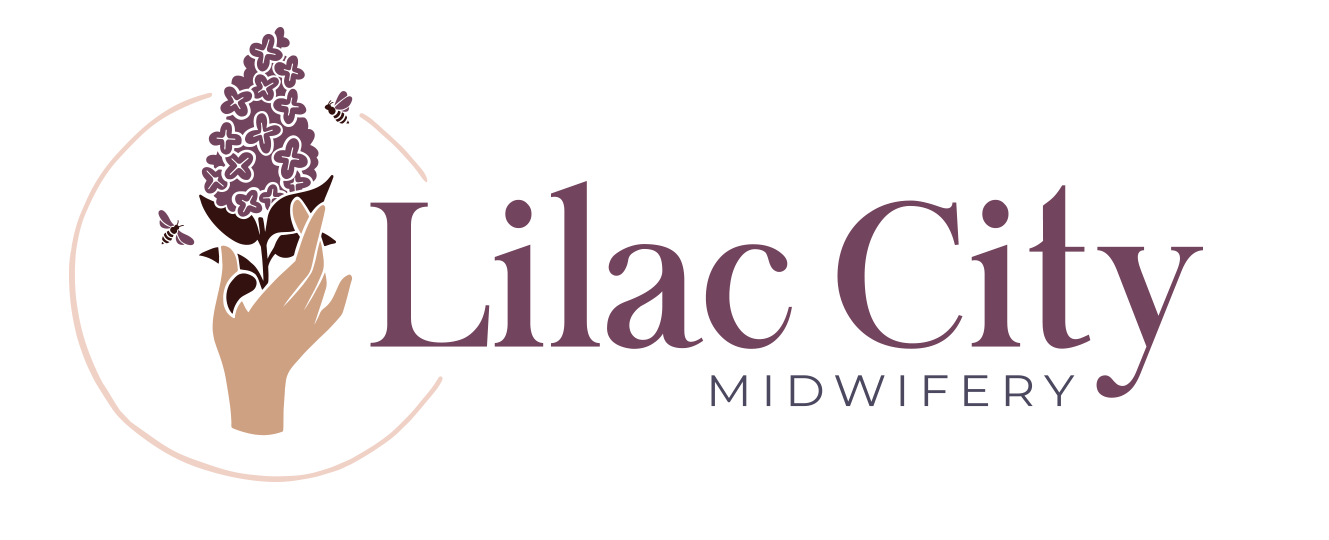What if my baby needs to be resuscitated at a home birth?
Let’s talk about the question everyone is afraid of... “what if my baby doesn’t breathe after delivery?”
When babies are in utero their oxygen is supplied through the umbilical cord. The oxygen bypasses the lungs and part of the heart and blood does not enter the lungs and heart fully until the first breath is taken.
A baby that is born and does not breathe on their own was likely stressed in the moments before delivery and does not have enough reserve to inflate their lungs themselves and begin circulating blood throughout their lungs and heart. But the good news is that a healthy baby who has not been severely compromised throughout labor will respond well to some inflation breaths especially when their cord (which is their main source of oxygen while in utero) is left intact.
Let’s take a look at how drastically a home birth and hospital birth scenerio can differ in this situation.
In a home birth setting a baby born not breathing and crying will be kept attached to their umbilical cord which is STILL supplying them with oxygen even after they are born. A baby who has not had their cord cut will respond so much quicker to resuscitation efforts than a baby who has had their cord (their source of oxygen) cut. In a real life setting what this usually looks like is a baby born blue and floppy (no tone in their body) but with a normal heart rate (this baby pictured had a heart rate of 150 when I checked just moments after this image was taken). Baby is dried and repositioned on their back and some inflation breaths are given with a bag and mask. Those gentle and consistent breaths paired with the oxygen the baby is still receiving from the cord are almost always enough to get a healthy baby breathing and crying well. After resuscitating a baby I always place them back on their mother’s chest with skin to skin contact and encourage the parents to talk to their baby. I continue to monitor the baby and provide post-resuscitation care while the baby is WITH their mama. Babies know and respond to their parent’s voices and it helps them transition well. Plus they have literally never been away from their mama and it makes total sense that they would transition better if they are in contact with or next to their mother.
In a hospital setting I can pretty easily predict what may have happened to this same baby. The baby would be born not breathing and with no tone, the cord would be cut so that the nurses could begin resuscitation efforts away from the mother in the warming station. Because the cord was cut the baby no longer has his source of oxygen and his heart rate which was 150 with birth could possibly drop below 60 which would then indicate the need for chest compressions along with inflation breaths. Chest compressions are not ideal, they can definitely cause damage but the damage caused by them is not as bad as death so, you do it. Even once the baby begins responding well to the resuscitation efforts by breathing and crying the protocol in hospital would be to take baby to the NICU to continue monitoring oxygen saturation and blood sugar levels away from the mother. 😞
If we just look at simple physics it tells us what to do. It should also be noted that a sick or compromised baby who is showing signs of distress in labor should be transferred to the hospital before delivery. But babies tell us what they will need of we are listening well. Humans are designed to fight for life and when given the proper support and the basic physiology is honored good outcomes are achieved 💞




